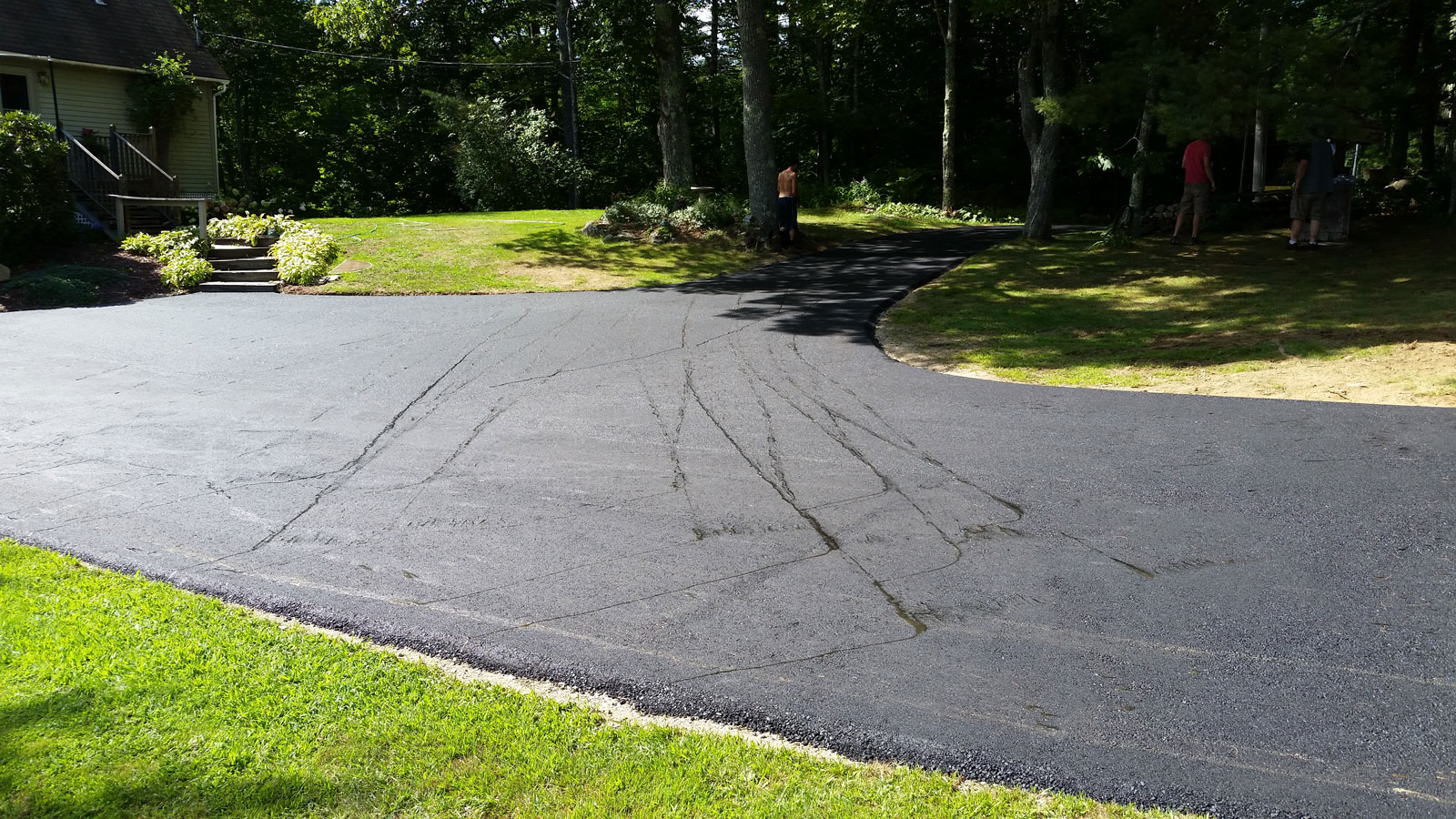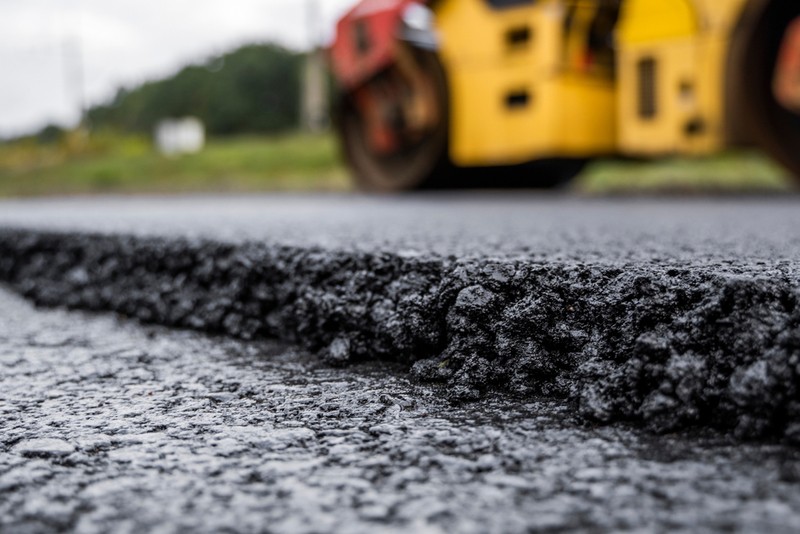Elevate Security and Charm: Angled Parking Lot Solutions with Asphalt Sealing
Elevate Security and Charm: Angled Parking Lot Solutions with Asphalt Sealing
Blog Article
Hot Mix Asphalt: A Lasting Service for Pavement
Hot Mix Asphalt (HMA) has become a leading sustainable option for sidewalk options, supplying a myriad of ecological benefits and cutting-edge modern technologies. Its capacity to minimize and recycle materials energy consumption presents a compelling instance for its adoption in roadway construction tasks. Moreover, the long-term performance and longevity of HMA make it a preferred choice for infrastructure development. As the demand for environment-friendly building methods grows, exploring the nuances of HMA's sustainability can provide important understandings right into the future of pavement solutions.
Environmental Advantages of Warm Mix Asphalt

Additionally, Warm Mix Asphalt helps to mitigate urban warm island effects. Its dark shade absorbs sunshine, decreasing the amount of heat mirrored back into the ambience contrasted to lighter-colored pavements. This can decrease ambient temperature levels in metropolitan areas, lowering the need for air conditioning and inevitably reducing energy intake.
Additionally, Hot Mix Asphalt contributes to enhanced stormwater monitoring. Its permeable nature allows water to infiltrate the sidewalk and reenergize groundwater materials, minimizing drainage and the threat of flooding. These ecological advantages make Hot Mix Asphalt a lasting selection for leading freeways and roads.
Energy Performance in HMA Production
Is energy efficiency a vital element in the production of Warm Mix Asphalt (HMA)? Energy plays a considerable role in the manufacturing of HMA, influencing both expense and ecological sustainability. One crucial element of power effectiveness in HMA production is the usage of warm mix asphalt (WMA) technologies.
Moreover, advancements in plant modern technologies have led to more energy-efficient HMA production processes. By enhancing power use in HMA production, the industry can minimize its carbon impact while preserving premium sidewalk materials.
Recyclability of Warm Mix Asphalt
The recyclability of Warm Mix Asphalt (HMA) is an essential facet of its sustainability and lasting environmental effect. HMA is just one of one of the most recycled products in the USA, with over 100 million loads of reclaimed asphalt sidewalk (RAP) being recycled annually in brand-new pavement building and construction. Recycling HMA uses a number of ecological advantages, such as reducing the requirement for virgin materials, reducing energy usage throughout manufacturing, and lowering the quantity of waste sent to landfills.
The process of recycling HMA includes milling the existing pavement, crushing it into smaller sized items, and mixing it with new aggregate and asphalt binder to develop a recycled mix. This recycled mix can usually do as well as and even much better than traditional HMA, while requiring less raw materials and generating lower greenhouse gas discharges. By integrating RAP right into new pavement projects, roadway companies can conserve natural deposits, reduce prices, and reduce the ecological footprint of roadway construction and maintenance activities. On the whole, the recyclability of HMA plays a significant role in advertising lasting practices within the pavement market.

Long-Term Performance of HMA
Asphalt pavements show durability and strength over an extended duration, mirroring the lasting performance of Warm Mix Asphalt (HMA) The longevity of HMA can be attributed to its ability to endure rush hour lots, extreme weather, and the results of aging. Studies have actually revealed that properly designed and effectively created HMA pavements can last for twenty years or more with regular maintenance. The secret to taking full advantage of the long-term efficiency of HMA hinges on making use of high-quality products, following finest methods in construction, and executing effective maintenance approaches. Proper drain, routine inspections, and prompt repair services are necessary for preserving the structural stability of HMA sidewalks gradually. Furthermore, advancements in HMA technology, such as using polymer-modified binders and warm mix asphalt, have even more boosted the durability and long life of HMA pavements. By focusing on quality construction useful content and maintenance methods, HMA remains to show itself as a sustainable and cost-effective service for resilient pavement framework.

HMA: Durability and Sustainability
Showing both durability and sustainability, Hot Mix Asphalt (HMA) has actually ended up being a cornerstone in the building of lasting pavement frameworks - hot mix asphalt. HMA's sturdiness comes from its capacity to stand up to hefty loads, extreme weather, and high website traffic quantities, making it a reputable selection for roadways, freeways, and airport paths. The make-up of HMA, which commonly consists of aggregates, binder, and filler, plays a crucial function in boosting its longevity and resistance to tear and use
In addition, HMA's sustainability lies in its recyclability and energy-efficient production procedure. The ability to recycle redeemed asphalt pavement (RAP) in brand-new HMA mixes minimizes the need for virgin products and minimizes the ecological effect of sidewalk building and construction and upkeep. In addition, the energy performance of generating HMA depends on its reduced blending temperature levels contrasted to various other sidewalk materials, resulting in decreased energy usage and greenhouse gas exhausts.
Conclusion
In final thought, hot mix asphalt (HMA) uses a sustainable remedy for sidewalk with its ecologically friendly qualities. HMA's recyclability, energy effectiveness in production, and long-term durability make it an eco-friendly selection for roadway building and construction. By preserving natural deposits, minimizing waste, and lowering greenhouse gas exhausts, HMA plays an essential duty in advertising sustainability in framework growth. Its ability to mitigate metropolitan warm island impacts additionally emphasizes its relevance in creating resilient and environmentally conscious pavement click for source systems.
HMA is one of the most recycled materials in the United States, with over 100 million heaps of redeemed asphalt sidewalk (RAP) being reused annually in brand-new pavement building and construction.The procedure of recycling HMA entails grating the existing pavement, squashing it into smaller sized pieces, and blending it with new accumulation and asphalt binder to create a recycled mix.Asphalt sidewalks demonstrate resilience and resilience over an extended period, showing the lasting efficiency of Warm Mix Asphalt (HMA) In find this addition, developments in HMA innovation, such as the use of polymer-modified binders and cozy mix asphalt, have actually better boosted the resilience and long life of HMA sidewalks. The ability to recycle recovered asphalt sidewalk (RAP) in brand-new HMA mixes minimizes the need for virgin products and lessens the ecological influence of pavement construction and upkeep.
Report this page